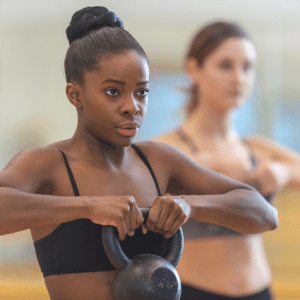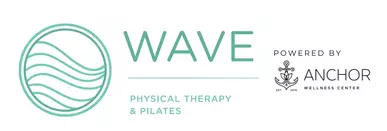Why do we care about “better posture”?
In physical therapy our goal is not to be constant posture analysts. Our goal is also not to achieve “perfect posture”.
We want to help you achieve what is optimal for your body and help train you out of any holding patterns your body may be stuck in that are not serving you and the health of your tissues.
What we are looking for are areas where tissues/muscles may have been lengthened over time due to a common position your body finds itself in that ultimately weakens those muscles. The same can be said for muscles that have become short and tight over time, also resulting in weakness. Muscles that are chronically compressed, as well as those chronically stretched, weaken the muscle. They can also can lead to the development of myofascial trigger points.
All of that to say, by assessing where we can make improvements in the mobility and strength of your musculoskeletal system, we can effectively treat you into a more efficient, “better posture” that better supports your body.
Common areas to address for better posture:
First and foremost, we want to get a good handle on proper breathing and core activation. Proper breathwork is essential to creating an efficient pressure system within the abdomen, which is the foundation of everything around it. Without establishing the breath, the body will likely stay in its compensatory patterns. Being able to activate and effectively hold a deep core contraction is also essential for creating stability in the spine. Again, this is foundational for correcting anything up and down the chain.

Your center of gravity sits around your sacrum, so creating proper mobility in the diaphragm with your breath and sufficient stability in your deep core allows your body to feel secure and ready to face the day!
Outside of that, some of the most common areas that become short and tight are the muscles at the back of the head (suboccipitals) and it’s a tossup between the hip flexors and the muscles along the spine of your back (erector spinae).
The suboccipitals become adaptively shortened over time due to forward head posture. Years of sitting at the computer or looking at the phone screen contribute to holding this position for hours on end. This often leads to the development of trigger points and headaches. Similarly, prolonged sitting contributes to the shortening of the hip flexors. Tightness in the low back muscles is often a result of this as well, in combination with a weak core and/or tending to sit with your pelvis rolled forward and an exaggerated curve in your low back (anterior pelvic tilt).
Very commonly, the mid back is an area where you will find the lengthening of muscles. In this region, the natural curve of our mid back becomes exaggerated stretching out the muscles between our shoulder blades and ultimately decreasing their capacity to contract.
How to achieve better posture with physical therapy:
Don’t worry, you don’t need to fully understand the biomechanics of posture and what is tight/weak to feel better! That’s your PT’s job! But it is important to draw awareness to what might be happening within your own body.
In physical therapy, we address the mechanical restrictions of the tissues involved first. Manual therapy techniques are used including dry needling, especially to resolve the short and tight muscles first. What makes these changes last? STRENGTH TRAINING!

The body will likely keep going back to old patterns if you do not retrain the muscles to hold you in a new position. Your therapist will guide you through a strength training program to help combat old patterns and create strength in areas to better support your system. Any region that is chronically lengthened or shortened will likely result in weakness; therefore, once the tissue is in a better state, the strength training begins!
Contact our office to find out your specific needs for “better posture” and better overall health!
About the author:

Dr. Samantha Dove is originally from San Antonio, Texas and has recently moved to Cincinnati from Atlanta, GA with her husband Sam and their dog Koda.
She was a springboard and platform diver for the University of Texas at Austin and has been a Doctor of Physical Therapy for over 5 years. Dr. Dove treats all orthopedic conditions with special interest in the spine, chronic pain, vestibular, and TMJ/TMD populations. She has her Manual Therapy Certification through the University of St. Augustine (USA) and has extensive dry needling training with KinetaCore.
Dr. Dove highly values continuing education in a variety of physical therapy topics but has taken special interest in the CranioFacial courses through USA to advance her TMD treatment skills. Health and wellness are a natural interest of hers in her personal life including participating in activities such as yoga, running, gardening, reading, cooking, family walks at Eden Park and all things self care! She is very excited to explore Cincinnati and to be joining the team at Anchor Wellness Center!


